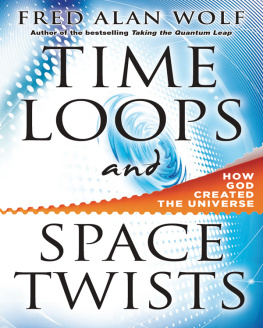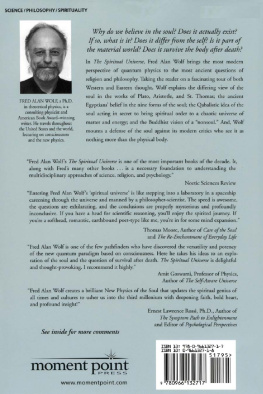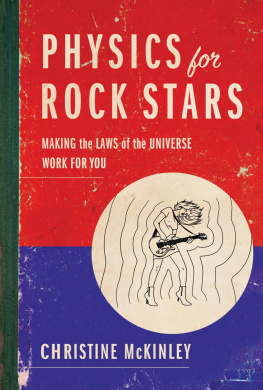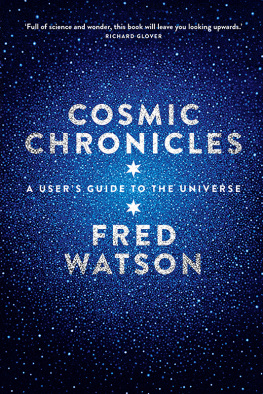Fred C. Adams - The five ages of the universe : inside the physics of eternity
Here you can read online Fred C. Adams - The five ages of the universe : inside the physics of eternity full text of the book (entire story) in english for free. Download pdf and epub, get meaning, cover and reviews about this ebook. year: 2016, publisher: Free Press, Simon & Schuster, genre: Science. Description of the work, (preface) as well as reviews are available. Best literature library LitArk.com created for fans of good reading and offers a wide selection of genres:
Romance novel
Science fiction
Adventure
Detective
Science
History
Home and family
Prose
Art
Politics
Computer
Non-fiction
Religion
Business
Children
Humor
Choose a favorite category and find really read worthwhile books. Enjoy immersion in the world of imagination, feel the emotions of the characters or learn something new for yourself, make an fascinating discovery.

- Book:The five ages of the universe : inside the physics of eternity
- Author:
- Publisher:Free Press, Simon & Schuster
- Genre:
- Year:2016
- Rating:4 / 5
- Favourites:Add to favourites
- Your mark:
- 80
- 1
- 2
- 3
- 4
- 5
The five ages of the universe : inside the physics of eternity: summary, description and annotation
We offer to read an annotation, description, summary or preface (depends on what the author of the book "The five ages of the universe : inside the physics of eternity" wrote himself). If you haven't found the necessary information about the book — write in the comments, we will try to find it.
Fred C. Adams: author's other books
Who wrote The five ages of the universe : inside the physics of eternity? Find out the surname, the name of the author of the book and a list of all author's works by series.
The five ages of the universe : inside the physics of eternity — read online for free the complete book (whole text) full work
Below is the text of the book, divided by pages. System saving the place of the last page read, allows you to conveniently read the book "The five ages of the universe : inside the physics of eternity" online for free, without having to search again every time where you left off. Put a bookmark, and you can go to the page where you finished reading at any time.
Font size:
Interval:
Bookmark:
Thank you for downloading this Free Press eBook.
Join our mailing list and get updates on new releases, deals, bonus content and other great books from Free Press and Simon & Schuster.
C LICK H ERE T O S IGN U P
or visit us online to sign up at
eBookNews.SimonandSchuster.com
We hope you enjoyed reading this Free Press eBook.
Join our mailing list and get updates on new releases, deals, bonus content and other great books from Free Press and Simon & Schuster.
C LICK H ERE T O S IGN U P
or visit us online to sign up at
eBookNews.SimonandSchuster.com

Free Press
An Imprint of Simon & Schuster, Inc.
1230 Avenue of the Americas
New York, NY 10020
www.SimonandSchuster.com
Copyright 1999 by Fred C. Adams and Gregory Laughlin
All rights reserved, including the right to reproduce this book or portions thereof in any form whatsoever. For information, address Free Press Subsidiary Rights Department, 1230 Avenue of the Americas, New York, NY 10020.
This Free Press edition November 2016
FREE PRESS and colophon are trademarks of Simon & Schuster, Inc.
For information about special discounts for bulk purchases, please contact Simon & Schuster Special Sales at 1-866-506-1949 or .
Designed by Carla Bolte
The Library of Congress has cataloged the hardcover edition as follows:
Adams, Fred, date
The five ages of the universe : inside the physics of eternity / Fred Adams, Greg Laughlin.
p. cm.
Includes bibliographical references and index.
1. Cosmology. I. Laughlin, Greg. II. Title.
QB981.A36 1999
523.1dc21
99-18139
CIP
ISBN 978-0-684-85422-9
ISBN 978-0-7432-3772-7 (Pbk)
ISBN 978-1-4391-1868-9 (ebook)
The long-term fate of our universe has always drawn our fascination. As astrophysicists, we are used to thinking about both the origin and fate of astronomical objects, such as stars, galaxies, and often the universe as a whole. During the twentieth century, and especially within the past two decades, physics, astronomy, and cosmology have advanced rapidly and we can now understand our universe with unprecedented clarity.
Most cosmological work has focused on the past history of the universe, and rightly so. The big bang theory and its modifications provide a highly successful paradigm for describing the origin of the universe, and recent astronomical data place this endeavor on a solid scientific foundation. Parallel developments in stellar evolution, star formation, and galaxy formation have rounded out our detailed understanding of the present-day universe. In recent years, the inventory of our universe has been bolstered further by the astronomical discovery of black holes, brown dwarfs, and planets orbiting other stars.
Against this background, late in the year 1995, we began a detailed scientific inquiry into the universe of the future, including the stars, galaxies, and other astrophysical entities living within it. Our research was motivated by a convergence of events. We felt that the time was right to reopen this issue. In spite of the recent progress concerning the history of the universe, relatively little attention had been given to the future universe. Landmark papers by Martin Rees, Jamal Islam, and Freeman Dyson were published in the 1960s and 1970s, and a small flurry of work outlining the consequences of proton decay followed in the early 1980s. With the greater perspective provided by recent progress in both physics and astronomy, however, we could take a much more detailed glimpse into the future. Past studies dealt mostly with large-scale cosmological issues, with little focus on stars and stellar objects. In fact, the long-term evolution of the lowest-mass stars, which live far longer than the current age of the universe, had not yet been calculated. This project was facilitated by Laughlins arrival at the University of Michigan to work with Adams, thus beginning our joint effort to peer into the darkness. As an added incentive, the University of Michigan held a theme semester which focused on Death, Extinction, and the Future of Humanity. For this occasion, Adams developed a new class on the long-term future of the universe. The relative paucity of reference material provided additional impetus to study the far future.
The results of our initial research work were published as a review article in Reviews of Modern Physics, in 1997, with the encouragement and guidance of Sir Martin Rees, the journal editor and the Astronomer Royal of England. Following the completion of the scientific manuscript, the popular media showed enthusiastic interest in the subject and the demand for public lectures was surprisingly high. This unforeseen public curiosity led us to consider writing a popular treatment of this topic, and this book is the result.
Our book differs from many within its class in that it introduces a substantial amount of new scientific material. During the production of this manuscript, we often faced scientific issues that had not been previously studied. For example, what happens if a small red dwarf star enters our solar system and disrupts the orbits of the planets? Can Earth be captured by such an encounter? What are the chances of this event taking place before our Sun dies? To answer these and other questions of this nature, we simply performed the necessary computations as the need arose. As a result, our book contains the results from new, previously unpublished, calculations and other scientific arguments. It thus presents the most complete and detailed treatment of the future to date.
Nevertheless, this book is intended for a general audience, and no previous knowledge of physics or astronomy is required to appreciate this biography of our universe. During this discussion, however, we often need to consider some very large numbers. In most instances, we present both the names for large numbers, such as billions and trillions, as well as the number in scientific notation. For example, a billion can be written as 109, a 1 followed by nine zeros; a trillion can be written as 1012, a 1 followed by twelve zeros, and so on. We also introduce a convenient new unit of time called a cosmological decade. When an interval of time, in years, is expressed in scientific notation, say years, then the exponent is the cosmological decade. The universe is now ten billion or 1010 years old, for example, which means that we are now living in the 10th cosmological decade. When the universe is ten times older, 1011 years old, the universe will experience its nth cosmological decade. In this book, we describe events of astronomical importance spanning time intervals up to 150 cosmological decades, or 10150 years.
Any description of the future universe necessarily contains speculative elements. In this book, we begin with our current knowledge of the laws of physics and our current understanding of astrophysics, and extrapolate forward to construct a vision of the future universe. Our extrapolation continues to lose focus, however, as we progress ever deeper into the dimness of future time. Along the way, we must incorporate the effects of physical and astronomical processes that remain under study. In particular, most of this book outlines future cosmology for a universe that expands forever, which is indeed suggested by current astronomical data. For completeness, however, a short discussion of a recollapsing universe is also included. In addition, we explicitly assume that both proton decay and the Hawking evaporation of black holes will eventually take place. Although both of these long-term processes are predicted in general terms by theoretical physics, they have not yet been experimentally verified.
Next pageFont size:
Interval:
Bookmark:
Similar books «The five ages of the universe : inside the physics of eternity»
Look at similar books to The five ages of the universe : inside the physics of eternity. We have selected literature similar in name and meaning in the hope of providing readers with more options to find new, interesting, not yet read works.
Discussion, reviews of the book The five ages of the universe : inside the physics of eternity and just readers' own opinions. Leave your comments, write what you think about the work, its meaning or the main characters. Specify what exactly you liked and what you didn't like, and why you think so.




